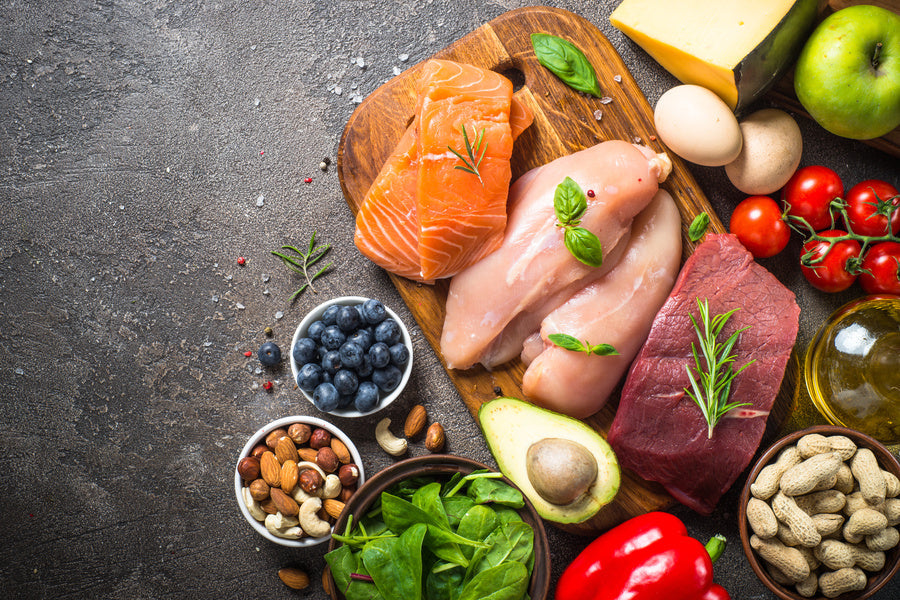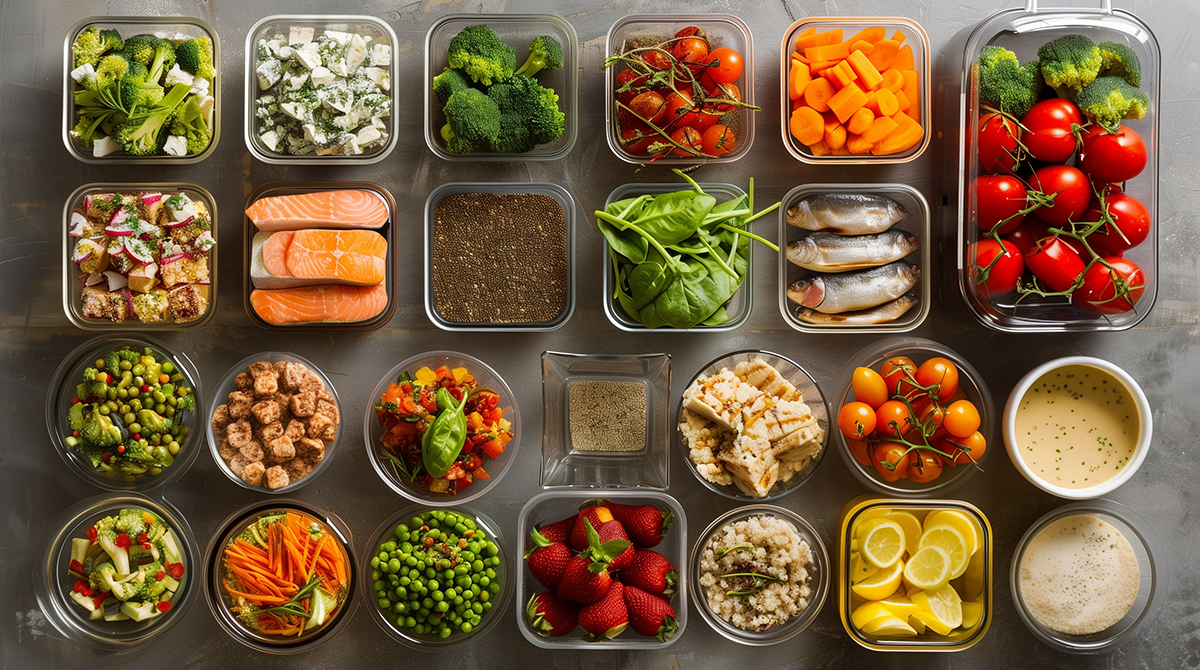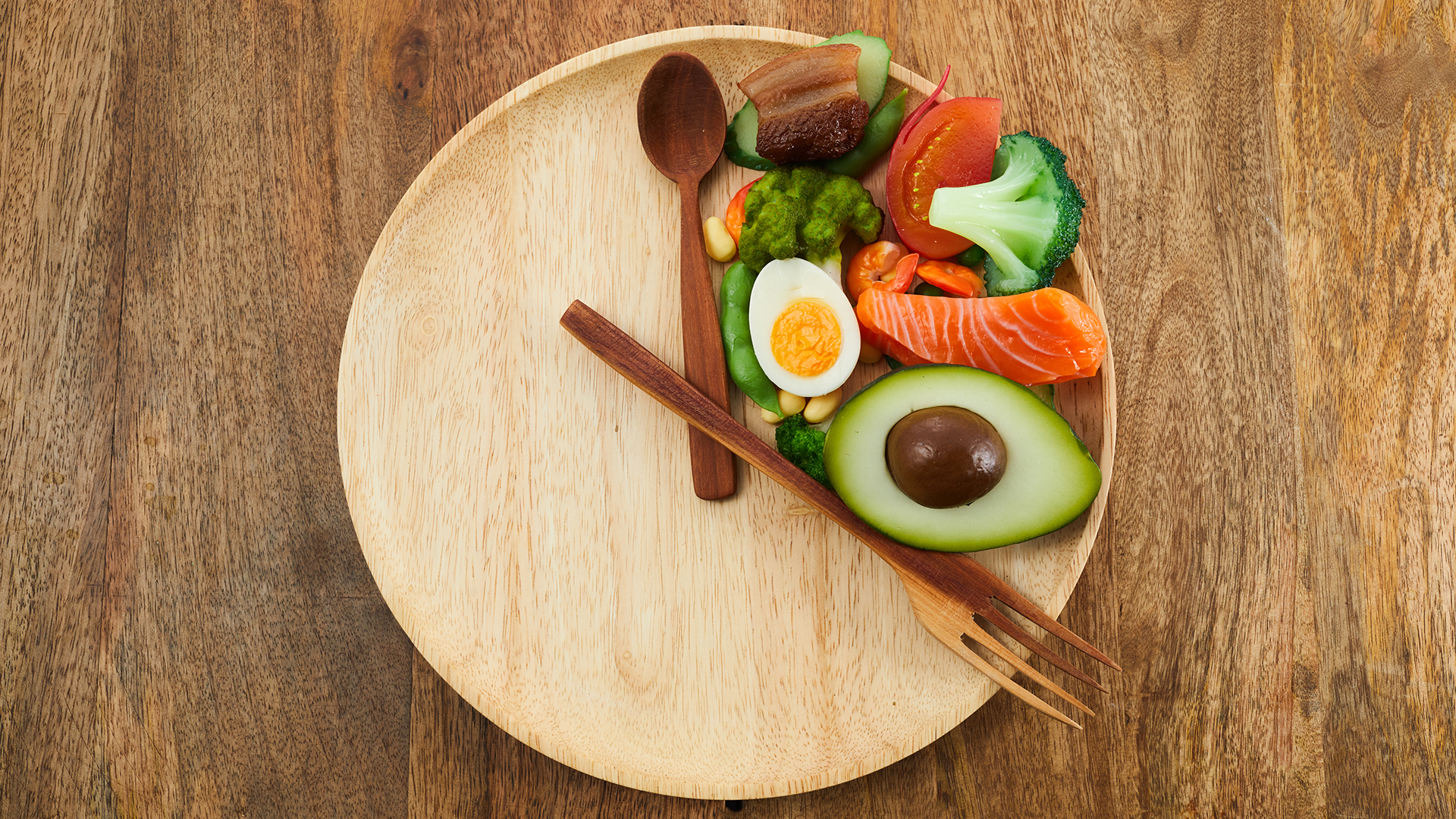If you’ve ever thought about losing weight over the last few years, then you’ve probably heard about the Keto diet. It’s gained popularity and hype via social media, and everyone is talking about doing it.
But if you’re new to weight loss and looking for a diet that fits your lifestyle, then the thought of keto might be daunting.
What is it, and how does it work?
Like most diets, it takes a bit of getting used to and figuring out what you can and can’t eat to make a success of it.
This blog explores the keto diet, its benefits and drawbacks, and whether it’s the right choice for your diet.
What is the keto diet?
The keto diet is a very low-carb, high-fat diet initially developed to treat medical conditions but can benefit many other people looking to lose weight.
The name comes from ketosis, the body's process when it runs out of carbohydrates and burns fats for fuel.
While it’s hard to know if your body is in true ketosis (you would need to test it with urine strips or a breath test), the term keto diet is a catch-all word for eating very low carbs, moderate protein, and high fat.
The typical layout of a standard keto plate will usually consist of 70-80% fat, 20% protein, and less than 10% carbohydrates.
Is the keto diet the same as a low-carb diet?
While the keto diet is undoubtedly an example of a low-carb approach, not all low-carb diets are keto.
Low carb could refer to any diet where carbohydrates are limited below normal levels, for example, the Atkins diet. But there are some critical differences between keto and other low-carb diets.
A keto diet generally has a lower carbohydrate intake than other diets, virtually eliminating them (the trace carbohydrates in leafy greens and some vegetables are OK).
The different types of ketogenic diets
There is more than one way to tackle the keto diet, which is excellent as it means you can choose the one that suits your preferences and lifestyle the best. The various types of the keto diet include

- Standard ketogenic diet (SKD): This is a very low-carb, moderate protein, and high-fat diet. It typically contains 70% fat, 20% protein, and only 10% carbs
- Cyclical ketogenic diet (CKD): This diet involves periods of higher-carb refeeds, such as five ketogenic days followed by two high-carb days.
- Targeted ketogenic diet (TKD): This diet allows you to add carbs around workouts.
- High protein ketogenic diet: This is similar to a standard ketogenic diet but includes more protein. The ratio is often 60% fat, 35% protein, and 5% carbs.
- Ketotarian or pescatarian keto - This is the vegetarian option of the standard keto diet, including fats such as coconut cream, milk, avocados, olive oil, nuts, and seeds. If fish is allowed, this can be added along with an abundance of non-stary, leafy green veg (sprouts, broccoli, cabbage). This is slightly healthier if you are concerned about too much fat in the meat.
How does the keto diet help me lose weight?
The key to losing weight while on the keto diet is ketosis.
|
Ketosis is a metabolic state in which your body uses fat as the primary source of fuel (instead of carbs) |
This happens when you drastically reduce the number of carbohydrates you consume, which limits your supply of glucose (the common fuel source for your body).
To do this, you need to limit your carb consumption to around 20-50 grams per day - and hit your calorie limit by filling up on fats such as meats, fish, nuts, and oils.
Limiting your protein consumption is also an important part of the keto diet, as it can be converted into glucose without carbs, which may slow down the move into ketosis.
Some people will test (via the urine of breath) to ensure they are in ketosis. If not, you will eat lots of fat without burning it, which can be an unhealthy way to support weight loss.
Ketosis turns your body into a fat-burning machine - which is why keto can be so effective for weight loss.
And if your diet downfalls include crisps, biscuits, and pastries, then cutting these from your diet will naturally mean you eat fewer calories - making it easier to lose weight and keep it off.
Related content: Paleo vs Keto diet: how to choose which is best for you?
How Much Weight Can You Shed in One Week on Keto?
Embarking on a keto diet often piques curiosity about rapid weight loss. In the initial week, most of the weight you lose is water weight, as your body depletes its glycogen stores.
Typical Weight Loss in the Initial Week:
- Water Weight: For many, this can range from 2 to 10 pounds (roughly 1 to 5 kilograms). The variance depends on factors like your starting weight and adherence to the diet.
- Fat Loss: Actual fat loss tends to be minimal in that first week, as the body is just beginning to adapt to using fat for energy instead of carbohydrates.
Factors Influencing Your Weight Loss:
- Starting Weight: Heavier individuals often see more significant initial weight drops.
- Diet Compliance: Strictly following the keto guidelines will enhance your results.
- Exercise Routine: Incorporating physical activity can boost weight loss, though it may contribute more to fat loss than just water.
Remember, while a significant weight drop can be motivating, consistent and gradual fat loss tends to be healthier and more sustainable long-term.
What are the benefits of a ketogenic diet?
Moving into a state of ketosis is a very effective way of burning fat and losing weight - even without going down the traditional calorie-burning route.
However, there are multiple other potential benefits to the keto diet that might make it the right option for you:
- Can support long-term weight loss
- Supports liver and detoxification of the body
- Lowers inflammation and supports hormones
- Reduces blood pressure
- Improves insulin sensitivity
- Being explored as a treatment for multiple chronic conditions (cancer, Alzheimer's, Epilepsy, PCOS)
Not everyone that follows the keto diet will have these benefits, and you will need to ensure you are in ketosis. However, it outlines some benefits reaped if you follow a keto diet.
Is the Keto Diet Good for People with Diabetes and Prediabetes?
The ketogenic diet, often referred to as the keto diet, has gained popularity for its potential benefits in managing diabetes and prediabetes. Here's why it might be an effective approach:
Enhanced Insulin Sensitivity
One significant advantage of the keto diet is its ability to enhance insulin sensitivity. A notable study reported an impressive 75% improvement in insulin sensitivity among participants, which is crucial for individuals managing diabetes.
Effective Blood Sugar Control
For those dealing with type 2 diabetes, long-term blood sugar management is essential. A small study involving women with type 2 diabetes showed significant reductions in hemoglobin A1C levels after adhering to a ketogenic diet for just 90 days. Hemoglobin A1C is an important marker of long-term blood sugar levels, making this outcome noteworthy.
Weight Loss Benefits
Shedding excess weight is directly linked to better diabetes management. Research involving 349 individuals with type 2 diabetes revealed an average weight loss of 26.2 pounds (11.9 kg) over a two-year period on the keto diet. This weight reduction is crucial, given the direct association between obesity and type 2 diabetes.
Reduced Dependence on Medication
Another key benefit observed in studies is a decreased reliance on certain blood sugar medications among participants following a ketogenic diet. This can be particularly advantageous for those seeking to manage their condition with fewer pharmaceuticals.
Conclusion
While the keto diet is not a one-size-fits-all solution, the evidence suggests it may offer several advantages for people with diabetes and prediabetes. By reducing body weight, improving insulin function, and enhancing long-term blood sugar control, this diet could be a valuable tool for managing these conditions. As with any dietary change, it's essential to consult with a healthcare professional before making significant adjustments.
What to expect in the first few days of keto
Although the keto diet is usually safe for most healthy people, some downsides can be experienced, especially in the first few days.
On average, it takes around 2-4 days to reach ketosis, and the side effects can be most severe. Here are some things you can expect to experience in the first few days of the ketogenic diet:
Ps. If you doubt the safety of the keto diet or have any pre-existing conditions, please speak to a health professional before going on the keto diet.
1. Keto flu…
Don’t worry; it’s not a real illness!
But one of the most common reported side effects reported by keto beginners is the keto flu.
As your body begins to move to a fat-burning mode, you might experience some side effects that can feel like the flu, including

- Diarrhea
- Constipation
- Brain fog
- Sleep issues
- Tiredness
These should not last for more than a couple of days and if they do you should stop and contact a healthcare professional.
2. Increased thirst…
Changing your diet can disrupt the balance of water and nutrients in your body, so it’s common to feel extra thirsty when you start keto.
Carbohydrates cause the body to hold water, so you will need to drink more water when you drastically reduce your carbohydrate intake. Over the first few days, ensure you stay hydrated and healthy as you move into ketosis.
If you wish to minimize the risk of these side effects, start on a regular low-carb diet before moving to keto. Keto is quite an extremely low-carb diet, and if you have no experience might be difficult to acclimatize to.
Is the keto diet easy to do?
This will vary depending on your current diet and how easy you find it to cut out and maintain a low-carb diet.
Some find it easy to fit in alongside their current diet, while others find it too challenging to do keto with their social life or family setup.
The keto diet might help lose weight, but it may not be a sustainable option. It’s important to find a diet that fits in with your lifestyle so that you can sustain it and prevent yo-yo dieting.
What foods can I eat on a keto diet?
Looking for a red and green list of foods to eat and avoid on your new keto diet?
We’ve got you. Here’s just a small list of foods to get you going

Best foods on a keto diet
- Meat
- Fish
- Seafood
- Eggs
- Tinned tuna
- Beef jerky
- Full-fat Greek yogurt
- Full fat cottage cheese
- Full fat cheese
- Cream
- Leafy green vegetables
- High-water vegetables (cucumber, courgette, squash)
- Avocado
- Nuts and seeds
- Coconut and coconut flour
- Olives
- Butter
- Oils
Foods to avoid on a keto diet
- Rice and other grains
- Oats
- Breakfast cereal
- Bread
- Noodles
- Honey and jam
- Potatoes and sweet potatoes
- Sweetcorn
- Root vegetables
- Beans, pulses, lentils
Can vegans do keto?
It’s not impossible to be vegan and follow a keto diet, but it is much more difficult as most vegan source of protein contains significant amounts of carbohydrates.
And because you wouldn’t be able to eat meat, fish, eggs, or dairy, it would be tricky to find foods that tick both the vegan and keto boxes.
Some options that you can include are:
- Nuts
- Tofu
- Leafy green veg
- Vegan yogurt or cheese
You will need to be very careful that you are including enough nutrient-dense foods that fulfill the keto requirements.
Related content: A vegetarian keto diet, can it be done?
Tips and Tricks for Following a Keto Diet
Embarking on a ketogenic journey? While the path can seem daunting, these practical tips will ease your transition and set you up for success.
-
Understand Food Labels: Begin by mastering the art of reading food labels. Pay close attention to the grams of fat, carbohydrates, and fiber. This knowledge will empower you to make informed choices about incorporating your favorites into your keto plan.
-
Plan Your Meals: Meal prepping is your best friend. By planning meals ahead, you can save time throughout the week and ensure you always have keto-friendly options available.
-
Utilize Online Resources: Dive into the wealth of resources available online. Websites, food blogs, and apps are treasure troves for finding keto recipes and meal inspirations. Craft your own personalized menu with ease.
-
Consider Meal Delivery: If convenience is key, explore meal delivery services offering keto-compliant dishes. These services provide a hassle-free way to enjoy delicious meals without straying from your diet.
-
Stock Up on Frozen Meals: Keep a stash of healthy frozen keto meals on hand for those hectic days, ensuring you always have something quick and diet-friendly.
-
Social Strategies: Anticipate gatherings by bringing your own foods. This proactive approach helps manage cravings and keeps you on track with your eating plan.
With these strategies, you'll find sticking to a ketogenic diet more manageable and rewarding. Happy keto journey!
5 easy meal ideas for keto dieters…

It’s all well and good having some keto-friendly foods, but what do they look like in the context of an actual day of eating?
Here are some meal ideas to help you with keto…
Baked eggs…
Preheat the oven to 200*C and spray two ramekins or small baking dishes with oil. Crumble in 85g of beef mince or chopped burger meat.
Add one chopped tomato, salt, pepper, and your favorite herbs and spices. Make a well in the middle of each dish and crack an egg into the hole.
Sprinkle with 50g of grated cheese. Bake for 15 minutes or until the eggs and meat are cooked.
Avocado salad
Slice one avocado, 100g cucumber, and 50g cherry tomatoes and arrange over a leafy green salad. Sprinkle 50g of cubed cheese over the top. Finish with a sprinkle of 20g pumpkin seeds
Cheesy omelet
Lightly fry 100g courgette until soft. Meanwhile, whisk 2 eggs with a small amount of melted butter. Pour the egg mix over the courgette and cook on low heat. Top with 50g grated cheese. Finish under the grill.
Packed peppers
Fill small peppers with full-fat cream cheese or cottage cheese. Baby peppers, Padron peppers, or pimento peppers work well.
Coconut flour cookies
Preheat the oven to 180*C. Mix 50g coconut flour, 3 tbsp granulated sweetener, 75g butter or coconut oil, and 2 eggs. Use a fork to mix. Add 1 tsp vanilla extract. Knead into a dough and form one large ball. Refrigerate the dough ball for 10 minutes, then cut it into 16 pieces, and roll each piece into a small ball. Place the balls on a lined baking sheet and press them into discs. Bake for 10-15 minutes.
We’re here for you however you decide to diet. Is keto the right diet for you? If you decide to give it a go, we really hope this keto beginners’ guide is useful.
Related content: The only keto grocery list you need to help you lose weight
A Week of Keto Meals: Your Guide to Delicious and Nutritious Eating
Thinking about diving into the keto lifestyle? Here's a week-long meal plan to get you started, balancing delicious tastes with the low-carb, high-fat principles of the ketogenic diet.
Monday
- Breakfast: Start your day with veggie egg muffins paired with juicy tomatoes.
- Lunch: Savor a chicken salad enriched with olive oil, feta cheese, and olives, accompanied by a refreshing side salad.
- Dinner: Enjoy salmon cooked to perfection with asparagus sizzled in butter.
Tuesday
- Breakfast: A delightful omelet featuring eggs, tomato, basil, and spinach.
- Lunch: Blend up a smoothie with almond milk, peanut butter, spinach, cocoa powder, and a touch of stevia. Serve it with sliced strawberries.
- Dinner: Indulge in cheese-shell tacos topped with spicy salsa.
Wednesday
- Breakfast: Nut milk chia pudding garnished with coconut shavings and blackberries.
- Lunch: Dive into an avocado and shrimp salad, rich in flavor and texture.
- Dinner: Treat yourself to pork chops accented with Parmesan cheese, served alongside broccoli and a light salad.
Thursday
- Breakfast: Feast on an omelet filled with avocado, salsa, peppers, onions, and aromatic spices.
- Lunch: Munch on celery sticks and a handful of nuts, accompanied by creamy guacamole and zesty salsa.
- Dinner: Relish chicken stuffed with pesto and cream cheese, with a side of grilled zucchini.
Friday
- Breakfast: Whip up a bowl of whole milk Greek yogurt, mixing in peanut butter, cocoa powder, and a medley of berries.
- Lunch: Create ground beef lettuce wrap tacos, garnished with crisp bell peppers.
- Dinner: Satisfy with loaded cauliflower and a medley of mixed vegetables.
Saturday
- Breakfast: Enjoy cream cheese pancakes topped with blueberries and a side of golden, grilled mushrooms.
- Lunch: A refreshing zucchini and beet "noodle" salad awaits.
- Dinner: Cook white fish in olive oil, paired with nutrient-rich kale and toasted pine nuts.
Sunday
- Breakfast: Delight in fried eggs with a savory side of mushrooms.
- Lunch: Taste low-carb sesame chicken with a generous serving of broccoli.
- Dinner: Relish spaghetti squash topped with a hearty Bolognese sauce.
Key to Success: Variety
To maximize the benefits of your keto journey, incorporate a variety of vegetables and meats throughout the week. This ensures a broad spectrum of nutrients and keeps your meals exciting.
For more inspiration and resources, consider exploring a variety of healthy keto recipes and compiling a diverse shopping list to keep your pantry keto-ready. This will help you maintain variety and excitement in your meals.
What Are Some Healthy Keto Snacks?
When cravings hit between meals, it's essential to have a lineup of delicious, keto-friendly snacks ready. Here’s a variety of options that cater to a low-carb lifestyle:
-
Protein Power: Enjoy the rich flavors of fatty meats or fish like salmon slices or prosciutto wrapped around cheese.
-
Nutty Indulgence: Savor a small serving of nuts or seeds such as almonds or sunflower seeds. These are packed with healthy fats.
-
Creative Sushi: Try making keto sushi bites using seaweed, avocado, and cream cheese.
-
Egg Delights: Boil a couple of eggs or whip up some deviled eggs for a protein boost.
-
Snack Bars: Opt for keto-friendly snack bars that have minimal sugar content.
-
Dark Chocolate: Delight in a piece of 90% or higher dark chocolate for a sweet treat that's still keto-friendly.
-
Creamy Yogurt Mix: Combine full-fat Greek yogurt with nut butter and a dash of cocoa powder for a rich snack.
-
Veggie Dips: Pair vibrant bell peppers with smooth guacamole for a refreshing crunch.
-
Berry and Cheese Combo: Mix strawberries and plain cottage cheese for a refreshing snack with a hint of sweetness.
-
Celery Sticks: Dip crunchy celery into salsa or guacamole for a satisfying crunch.
-
Jerky Treats: Munch on beef jerky for a salty and chewy protein hit.
-
Leftover Magic: Take smaller portions of keto-friendly leftover meals to enjoy as snacks.
-
Decadent Treats: Indulge in fat bombs that are rich in taste and help satisfy your hunger.
These snack ideas are perfect for keeping your energy up without compromising your keto goals.
How to Dine Out on a Ketogenic Diet
Navigating restaurant menus while adhering to a ketogenic diet doesn’t have to be tricky. With a few strategic choices, you can enjoy your meal without breaking your dietary plan.
Main Courses
-
Meat and Fish Dishes: Opt for dishes centered around protein like grilled chicken, steak, or fish. Request to swap high-carb sides, like potatoes or rice, for extra greens or a side salad.
-
Egg Delights: Breakfast-all-day spots are your allies. Think omelets loaded with cheese, peppers, and spinach, or classic eggs with bacon.
-
Bun-less Wonders: Enjoy burgers without the bun. Many places will gladly offer this lower-carb option. Pair with a salad or steamed veggies rather than fries. Enhance the meal with toppings like avocado, cheese, or a fried egg.
Ethnic Cuisine
- Mexican Feasts: Indulge in meat-centric dishes. Skip the tortillas and embrace flavors by adding guacamole, salsa, sour cream, or shredded cheese.
Sweet Endings
- Diet-friendly Desserts: For dessert, explore options like a cheese platter or fresh berries with a dollop of cream. Ask if they can provide sugar-free alternatives.
Additional Tips
-
Communicate: Don’t hesitate to ask your server for substitutions or modifications. Most restaurants are accustomed to such requests.
-
Research Ahead: Check the restaurant menu online before going. It helps in planning your meal in advance and reducing any anxiety about the options.
-
Stay Hydrated: Pair your meal with a glass of water or unsweetened tea, avoiding sugary beverages.
Eating out can remain a pleasurable experience without compromising your ketogenic commitments. With a little preparation and a few requests, you can have a satisfying and keto-friendly meal anywhere.
Are There Any Supplements Recommended for a Keto Diet?
While supplements aren't a necessity on a ketogenic diet, they can certainly provide some added benefits that might enhance your experience and results.
-
MCT Oil: Often mixed into drinks or yogurt, MCT oil can offer a quick energy boost by raising ketone levels. It's a popular choice for those seeking to maintain high energy.
-
Electrolytes and Minerals: As the keto diet can alter your body's water and mineral balance, incorporating minerals like sodium, magnesium, and potassium can help. Adding a pinch of salt to your meals or taking an electrolyte supplement might ease the transition as your body adapts.
-
Caffeine: Known for boosting energy, caffeine may also support fat loss and improve physical performance. Enjoy it responsibly in coffee or tea to complement your keto lifestyle.
-
Exogenous Ketones: These supplements could assist in increasing the body’s ketone levels, possibly helping with energy and mental clarity.
-
Creatine: Especially useful for those combining keto with strength training or high-intensity workouts, creatine supports muscle performance and growth.
-
Whey Protein: If increasing protein intake is challenging on a keto diet, a half scoop of whey protein in shakes or yogurt can be an easy solution without excess carbs.
Conclusion
Supplements like exogenous ketones, MCT oil, electrolytes, and creatine can be particularly beneficial on a ketogenic diet, offering enhanced energy and performance. However, it's crucial to tailor your supplement choices to your personal health needs and dietary goals. If in doubt, consulting with a healthcare professional is always a wise decision.
Is keto the right diet for beginners?
So is the keto diet right for you?
If you have any health problems, particularly kidney problems, or are missing a gallbladder, then it’s not advised that you do the keto diet.
If you are otherwise healthy then you will be able to follow the keto diet, however, as a beginner diet, it’s not the easiest to get your head around and maintain. If this is the case you might want to start on an alternative low-carb diet in order to prepare your body for ketosis.
If you do manage to stick to the keto diet, then there are lots of brilliant health benefits - one of the main ones being weight loss.




